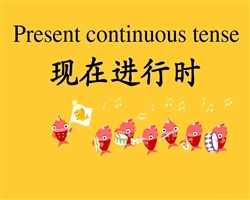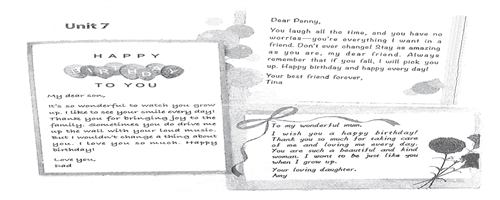China has long been known as the “land of ceremony and propriety”.
中国自古以来就是一个文明礼仪之邦。
Consequently, there are certain manners that should be observed at banquets or formal dinners.
这种“文明礼仪”表现在饮食文化上,便出现了诸多的宴席礼节。
First,seat order.
首先是宴席的座次。
Chinese people attach great importance to the seating order at banquets or formal dinners.
中国人非常讲究“长幼有序”,形成了严格讲究宴席座次的传统礼俗。
In the ancient times, at a banquet, people sat in a circle on the ground.
古代酒席一般是席地围坐。
Their seating arrangements are unknown,but it is certain that they were arranged in a certain order.
其座次的顺序尚不得而知,但肯定是有区别的。
It was recorded that the most honorable guest sat facing the east, the next important guest sat facing the south, next facing the north and the last facing the west.
据资料记载:古代宴席以坐西面东为尊位,坐北面南次之,坐南面北又次之,坐东面西为下座。
Even today at formal banquets people are arranged in a certain order, but in different areas, there are different rules concerning seat order.
即使是现在,日常生活中稍微正规一些的场合,人们对酒席上的座次仍然有严格的要求,但各地的习惯却并不一样。
In the past, Chinese people often sat around a so-called eight-immortal table (a table with a rectangular top, normally with eight seats around it) to dine.
过去,中国民间喜欢用正方形的八仙桌。
In the north, the seat order was arranged this way:
北方八仙桌的座次一般是:
the two seats facing the door were the most important, the host sat on the right and the most honorable guest on the left;
面门的两个座位为正座,其中右位为主客,左位是主人;
opposite these two seats sat two specially invited guests who were supposed to help entertain the main guests;
正座的对面(即背门的两个座位)为陪座,通常是晚辈或主人家找来的陪客;
the other people, guests or specially invited guests, were arranged, according to their age, to sit on the other two sides of the table.
左右两侧为侧座,或客人或陪客,大多依年龄长幼顺序而坐。
The two seats closer to the host and most honorable guest were considered more important than theother two seats.
靠近正座者为上,靠近陪座者为下。
In the south, the seat order was a bit different.
南方的八仙桌座次略有不同。
Apart from seat order, there are also rules regarding the order of serving dishes and the way dishes are set on the table.
其次是上菜的顺序和摆菜的位置。所谓上菜的顺序,就是指菜肴依次端上宴席的次序。实际上,宴席上的“出菜”有广义、狭义之分。
广义的出菜,是指酒、荤素菜、饭的上席顺序,狭义的出菜则仅指菜肴的上席顺序。
Dishes, in the broad sense, refer to wine (or liquor), meat and vegetable dishes and grain food; in the narrow sense, it only refers to meat and vegetable dishes.
上菜的规矩有很大的变化。
The rules have undergone some changes.
在古代,先上饭后上酒,而现在则是先上酒、菜,后上饭。
In the ancient times, grain food was served before wine, while today wine and meat and vegetable dishes are served before grain food.
荤素菜分为凉菜和热菜两种。
For meat and vegetable dishes, there are cold dishes and hot dishes.
通常先上凉菜,后上热菜;先吃干的,后喝稀的。
Normally cold dishes are served before hot ones, dry dishes are served before soup.
热菜为主,一般为双数,如4个、6个、8个。
Hot dishes are the main courses; usually there are even numbers of hot dishes, 4, 6 or 8.
有时甚至16个,或者32个。
Sometimes there could be 16 or 32 dishes.
最豪华的宴席——“满汉全席”有108道菜。
The most sumptuous feast—Man Han Feast, has as many as 108 dishes.
汤一般是最后上。
Soup is usually the last dish.
端上席的菜肴摆放在宴席的什么位置,也是中国宴席非常讲究的一个内容。尤其是在正式的宴席上,什么菜摆在什么地方,都有一定的讲究。
For the way dishes are set on the table, there are also rules.
比如:新上的菜都要放在靠主席或主宾的位置;上整鸡、整鸭、整鱼时,一般将头部冲着主席或主宾,以示尊敬等等。
For example, newly served dishes are always put near the most honorable guest; when whole fish, whole chicken or whole duck is served, the dish is normally put in such a way that the head is towards the most honorable guest. This is a way to show respect to the most honorable guest.
在中国,为了体现对客人的尊敬和好客,主人通常给客人夹菜。
In order to show their respect and hospitality, Chinese hosts often help the guests to the dishes.
出于卫生,餐桌上摆有备用的筷子和勺子。
For hygiene’s sake, when doing this, they usually use an extra pair of chopsticks or spoon put on the table





 。
。